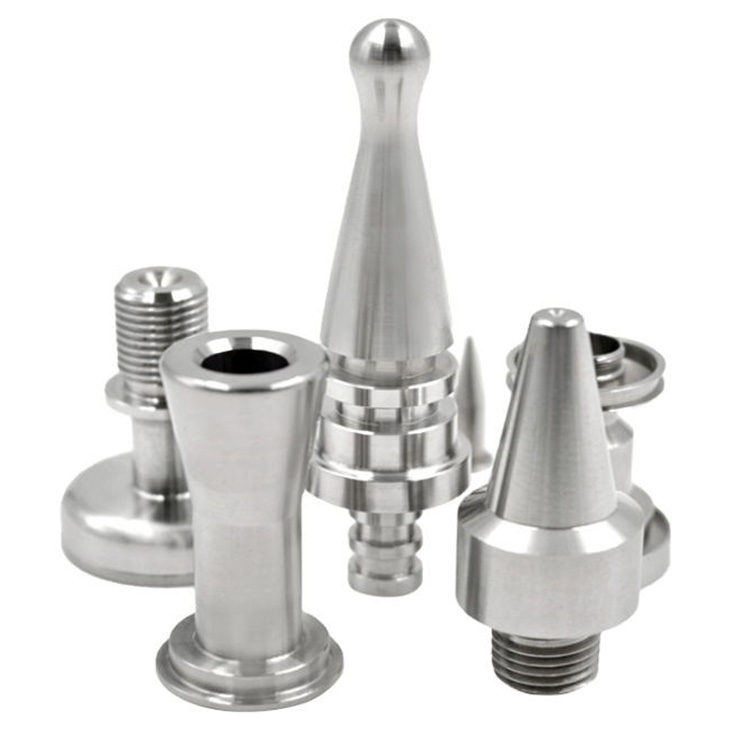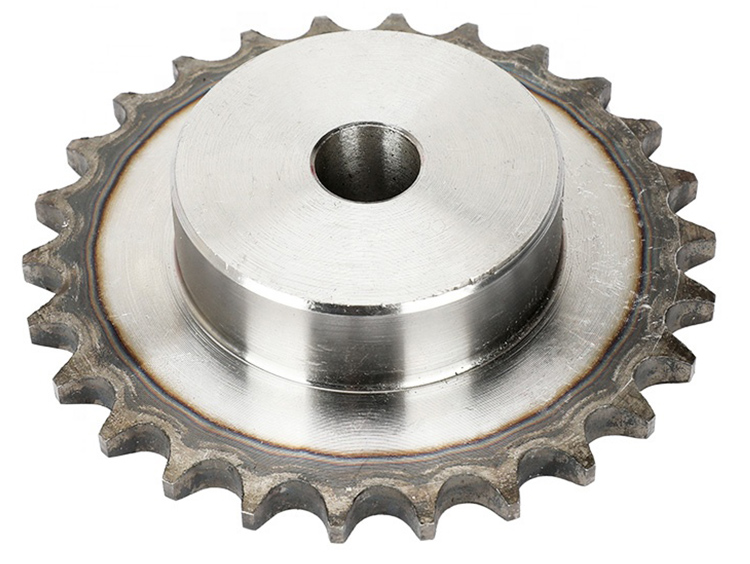
How to Choose Suitable Materials for CNC Machining
There are hundreds of metal alloys available for CNC milling and turning. Which one is most suitable for you depends on many factors, including price, processability, corrosion resistance, strength, weight, and product appearance.
Aluminum 6061
This is the most common universal aluminum grade. The main alloying elements are magnesium, silicon, and iron. Like all aluminum alloys, it has a good strength to weight ratio and is naturally resistant to atmospheric corrosion. Other advantages include good processability and processability, which can be welded and anodized. Its wide availability means it is economical.
When heat-treated, 6061 has a higher yield strength than annealed 6061, although the price is slightly higher. The disadvantage of 6061 when exposed to saltwater or other chemicals is its poor corrosion resistance. For more demanding applications, it is not as strong as other aluminum alloys.
6061 is commonly used for automotive parts, bicycle frames, sports equipment, and some aircraft components and frames of RC vehicles.
Aluminum 7075
7075 is a higher grade of aluminum, mainly alloyed with zinc. It is one of the strongest aluminum alloys with excellent strength and weight characteristics.
Due to its strength, it has average processability, which means it tends to bounce back to its original shape when cooled. 7075 is also machinable and can be anodized. 7075 usually hardens to T6. However, it is a good choice for welding and should be avoided in most cases. We often use 7075 T6 to manufacture injection mold tools. It is also used as a high-intensity leisure equipment for mountain climbing, as well as for automobiles, aerospace stands, and other pressure components.
brass
Brass is an alloy of copper and zinc. This is a very soft metal that can usually be processed without lubrication. It is also highly feasible at room temperature, so it is often found in applications that do not require significant force. There are various types of brass, which largely depend on the percentage of zinc. As the percentage increases, the corrosion resistance decreases.
Brass is highly polished and looks like gold. This is the reason why it is commonly found in cosmetic applications. Brass is conductive but non-magnetic and can be easily recycled.
Brass can be welded, but it is most commonly connected to low-temperature processes such as brazing or welding. Another characteristic of brass is that it does not ignite when struck with another metal, making it suitable for use in potentially explosive environments. It is interesting that brass has natural antibacterial and antimicrobial properties, and its use in this area is still under research Brass is common in pipe fittings, home decor hardware, zippers, naval hardware, and musical instruments.
Stainless steel 303
There are many varieties of stainless steel, hence it is called due to the addition of chromium that helps prevent oxidation (rust). Due to the similarity of all stainless steels, it is necessary to be very careful when testing the incoming raw materials with modern measuring equipment, such as OES detectors, to confirm the characteristics of the steel you are using.
In the case of 303, sulfur was also added. This sulfur helps manufacture 303 of the easiest to process stainless steels, but it also tends to reduce their corrosion protection. 303 is not a good choice for cold forming (bending) and cannot be subjected to heat treatment. The presence of sulfur also means that it is not a good candidate for welding. It does have excellent machining performance, but it must be maintained with speed/feed, and the sharpness of cutting tools is commonly used for stainless steel nuts and bolts, fittings, shafts, and gears. However, it should not be used for marine grade accessories.
Stainless steel 304
This is the most common form of stainless steel found in various consumer and industrial products. Usually referred to as 18/8, this refers to the addition of an alloy containing 18% chromium and 8% nickel. These two components also make the material particularly tough and non-magnetic.
304 is easy to handle, but unlike 303, it can be welded. It is also more corrosion-resistant in most normal (non chemical) environments. For mechanics, it should be processed with very sharp cutting tools without being contaminated by other metals. Throughout history, steel 304 has been an excellent choice for kitchen accessories, tableware, cans, and pipes used in industry, construction, and automotive decoration.
Stainless steel 316
Adding molybdenum makes 316 even more corrosion-resistant, so it is usually considered a marine grade stainless steel. It is also tough and easy to weld.
316 is used for construction and marine fittings, industrial pipelines and tanks, automotive decoration, and kitchen utensils.
Carbon steel 1045
This is a common mild steel grade, i.e., not stainless steel. It is usually more expensive than stainless steel, but quite powerful and harder. It is easy to machine and weld, and can be hardened and heat treated for various hardness levels.
1045 steel (European standard, C45) is used in many industrial applications for nuts and bolts, gears, shafts, connecting rods, and other mechanical components that require higher toughness and strength than stainless steel. It is also used for architecture, but if exposed to the environment, it is usually surface treated to prevent rusting.
titanium
Titanium is titanium with high strength, light weight, toughness, and corrosion resistance. It can be welded, passivated, and anodized to increase protection and improve its appearance. Titanium is not polished, especially for poor power conductors, but for good heat. It is a tough material for machines and should also use special cutters.
Titanium is usually biocompatible and has a very high melting point. Although more expensive than other metals in commercial form, it is actually very abundant in the Earth's crust but more difficult to refine. It has found applications in the most demanding aerospace, military, biomedical, and industrial fields, where it resists heat and corrosive acids.
We are happy to recommend the best solution for you. Please feel free and contact us for an inquiry.









